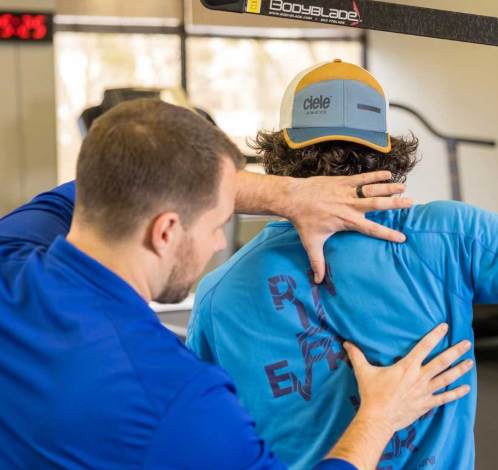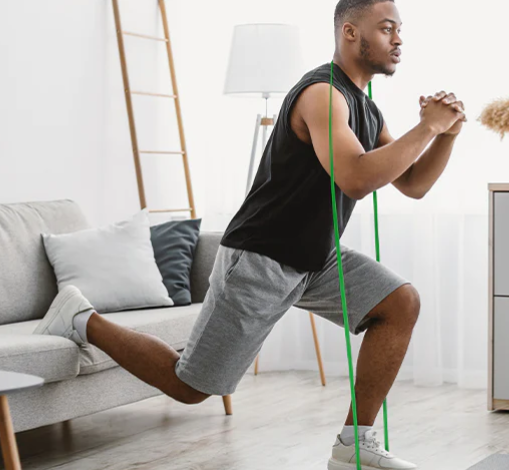
Effective Ways to Collaborate with Your Physical Therapist for Shoulder Tendinosis Recovery
Shoulder tendinosis, also known as rotator cuff tendinosis, can make even everyday tasks a challenge. While the journey to recovery can be difficult, working closely with your physical therapist can help you regain strength and mobility. In this guide, we’ll explore the importance of collaborating with your therapist during shoulder tendinosis recovery and share tips to enhance your rehabilitation process.
What is Shoulder Tendinosis?
Shoulder tendinosis occurs when the tendons, particularly in the rotator cuff, become damaged and worn over time. This can result from overuse, aging, or previous injuries. Common symptoms include persistent shoulder pain, difficulty moving your arm, and trouble with tasks like lifting or reaching. Early intervention is essential, and physical therapy plays a crucial role in managing and recovering from this condition.
How Physical Therapy Helps in Shoulder Tendinosis Recovery
Physical therapy is a non-surgical approach that focuses on treating muscle and tendon issues like tendinosis. A physical therapist will assess your condition, create a personalized rehabilitation plan, and guide you through exercises designed to reduce pain and restore function. Through a combination of exercises, hands-on techniques, and education, physical therapy aims to help you recover, improve your movement, and enhance your quality of life.
The Power of Teamwork with Your Physical Therapist
Successful recovery from shoulder tendinosis largely depends on how well you collaborate with your physical therapist. Effective communication and cooperation allow you to set clear goals, track progress, and adapt your treatment plan as needed. By working together, you can achieve faster results and reduce the likelihood of long-term issues.
Key Strategies for Collaboration
Here are some tips for making the most of your partnership with your physical therapist:
1. Open Communication
Communication is essential for successful treatment. Here’s how to foster a productive dialogue:
- Share Your Health History: Provide your therapist with a detailed history of your shoulder condition, including any previous injuries or issues related to tendinosis. This will help your therapist create a tailored plan that suits your needs.
- Discuss Your Symptoms: Be honest about how you feel during and after therapy. If you’re experiencing pain or discomfort, let your therapist know so they can adjust your treatment plan accordingly.
2. Set Realistic Goals
Collaborate with your therapist to establish achievable rehabilitation goals. Here’s how:
- Align Expectations: Have an open conversation about your expectations for recovery, including the timeline and level of improvement you hope to achieve. Setting realistic goals helps maintain focus and motivation.
- Identify Milestones: Break your goals into smaller milestones. Celebrating each milestone can provide motivation and a sense of accomplishment along the way.
3. Active Participation
Your active involvement in the recovery process can significantly influence the outcome. Here’s how to take an active role:
- Commit to Home Exercises: Complete the exercises your therapist assigns at home. Consistent practice will complement your in-clinic sessions and speed up your recovery.
- Seek Clarification: If you’re unsure about any part of your treatment plan, ask your therapist for clarification. Understanding the purpose and proper technique for each exercise will help you stay committed to the process.
4. Track Progress and Report Discomfort
Keeping your therapist informed about your progress and any discomfort is vital for adjusting the treatment plan:
- Provide Regular Updates: Share details about improvements or setbacks. Keeping a progress journal can be helpful for tracking changes over time.
- Report Pain or Discomfort: If you experience pain or discomfort during exercises, let your therapist know immediately. They can modify your routine to prevent further injury and ensure proper healing.
5. Ask Questions
Don’t hesitate to ask questions during your treatment sessions:
- Exercise Techniques: Ensure you’re performing exercises correctly by asking your therapist for guidance on proper form. Proper execution reduces the risk of injury and ensures you benefit fully from each movement.
- Home Care Instructions: Ask about any specific self-care strategies, such as rest, ice, or pain management techniques, that can support your recovery at home.
Hands-On Techniques and Exercises
Physical therapists will demonstrate various exercises and techniques to help with shoulder tendinosis. Here are a few common exercises that may be part of your treatment plan:
- Shoulder Movements: Simple shoulder exercises, such as arm swings or gentle stretches, will help improve your shoulder’s range of motion.
- Strengthening Exercises: Your therapist may guide you through exercises designed to strengthen the muscles around the rotator cuff, aiding in your recovery.
- Stretching: Stretches like the “sleeper stretch” or “cross-body stretch” target tight muscles and improve flexibility.
- Manual Therapy: In some cases, your therapist may use hands-on techniques like gentle massages or stretches to relieve tension and pain.
Tailoring the Treatment to Your Needs
Each patient’s recovery is unique, and your physical therapist will adjust your plan as needed. This may involve altering exercises or introducing new techniques based on your progress. Regular communication is key to ensuring that the treatment plan evolves to meet your needs.
The Importance of Home Care
Recovery extends beyond the clinic. Your physical therapist will provide you with home exercises and self-care guidelines to maintain progress between sessions. Incorporating these practices into your daily routine will support your healing and ensure steady improvement.
Tracking Progress and Overcoming Setbacks
Collaboration allows for regular assessments of your progress. If you’re not meeting your recovery goals or encounter setbacks, your therapist can modify the plan to get you back on track. Recovery is rarely linear, so having a supportive therapist to navigate challenges is essential.
Celebrating Small Wins
As you progress in your recovery, take time to celebrate small victories, such as improved shoulder mobility or reduced pain. Acknowledging these milestones will keep you motivated and reinforce the value of working closely with your therapist.
Conclusion
Recovering from shoulder tendinosis requires active collaboration with your physical therapist. By maintaining open communication, setting realistic goals, participating in your treatment, and tracking progress, you can optimize your recovery process. Home care, along with professional guidance, plays a critical role in maintaining progress and preventing future issues.
Remember, your physical therapist is there to guide you every step of the way. By prioritizing teamwork and staying committed to your recovery, you’ll regain shoulder function and reduce pain, leading to a more active and pain-free lifestyle.






